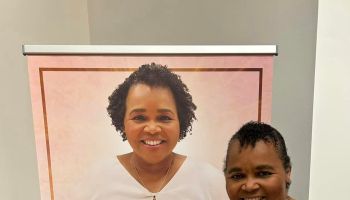Just 45 years ago, 16 states (including Virginia) considered marriages between two people of different races illegal.
But in 1967, the U.S. Supreme Court decided the case of Richard Perry Loving, who was white, and his wife, Mildred Loving, of African American and Native American descent.
The case changed history – and was captured on film by LIFE photographer Grey Villet, whose black-and-white photographs are now set to go on display at the International Center of Photography, and have been turned into a documentary.
Twenty images show the tenderness and family support enjoyed by Mildred and Richard and their three children, Peggy, Sidney and Donald.
The children, unaware of the struggles their parents faced, are captured by Villet as blissfully happy as they play in the fields near their Virginia home or share secrets with their parents on the couch.
Richard and Mildred Loving, caught sharing a kiss on their front porch, appear more worry-stricken.
And it is no wonder – 8 years prior, the couple married in the District of Columbia to evade the Racial Integrity Act of 1924, which banned any white person marrying any non-white person.
But when they returned to Virginia, police stormed into their room in the middle of the night and they were arrested.
Richard and Mildred were found guilty of miscegenation in 1959 and were each sentenced to 1-year in prison, suspended for 25 years if they left Virginia.
They moved back to the District of Columbia, where they began the long legal battle to erase their criminal records – and justify their relationship. But life in the big city is not what they wanted, so they snuck back into Virginia and set-up house.
The Lovings weren’t media savvy, but the camera loved them all the same. Mildred, with her lovely smile and natural sense of calm, did most of the talking as broad-shouldered, crew-cutted Richard performed his chores.
Clearly, the attention made them feel awkward; the last thing they wanted was a fuss, but when trouble came, they faced it with courage. Mildred was the one with the presence of mind to write to then-Attorney General Robert F. Kennedy seeking legal advice; she was the one who would talk to reporters on the courthouse steps while her husband often stared at his shoes. Whenever the Lovings went to court (in Richmond), Richard would say little while Mildred took careful notes in neat penmanship.
“What came through about the two of them was just what everyone said — they were very much in love. Richard was a guy, who, if you took the caricature of him, he would have left her. He didn’t need all that grief. He was a white guy, he was ruling class. But [leaving her] was never a question. It was never a possibility,” one of their lawyers said.
Following vocal support from the Presbyterian and Roman Catholic churches, the Lovings won the fight – with the Supreme Court calling Virginia’s anti-miscegenation law unconstitutional in 1967.
It wrote in its decision: ‘Marriage is one of the basic civil rights of man, fundamental to our very existence and survival. To deny this fundamental freedom on so unsupportable a basis as the racial classifications embodied in these statutes, classifications so directly subversive of the principle of equality at the heart of the Fourteenth Amendment, is surely to deprive all the State’s citizens of liberty without due process of law.’
Following the ruling, there was a 448% increase in the number of interracial marriages in Georgia alone.
In 2007, 32 years after her husband died, Mildred Loving – who herself passed away the following year – released a statement in support of same-sex marriage.
She said: “Not a day goes by that I don’t think of Richard and our love, our right to marry, and how much it meant to me to have that freedom to marry the person precious to me, even if others thought he was the ‘wrong kind of person’ for me to marry. I believe all Americans, no matter their race, no matter their sex, no matter their sexual orientation, should have that same freedom to marry.
I am still not a political person, but I am proud that Richard’s and my name is on a court case that can help reinforce the love, the commitment, the fairness, and the family that so many people, black or white, young or old, gay or straight seek in life. I support the freedom to marry for all. That’s what Loving, and loving, are all about.”
Their story is a powerful statement about freedom. Anyone who spends their Valentine’s evening watching “The Loving Story” and come away with a renewed belief in love’s resilience.
Photographs of their family life and legal fight with the law were unearthed by director Nancy Buirski during the making of a documentary about the couple.
Her documentary, “The Loving Story,” continues to air on HBO.
















